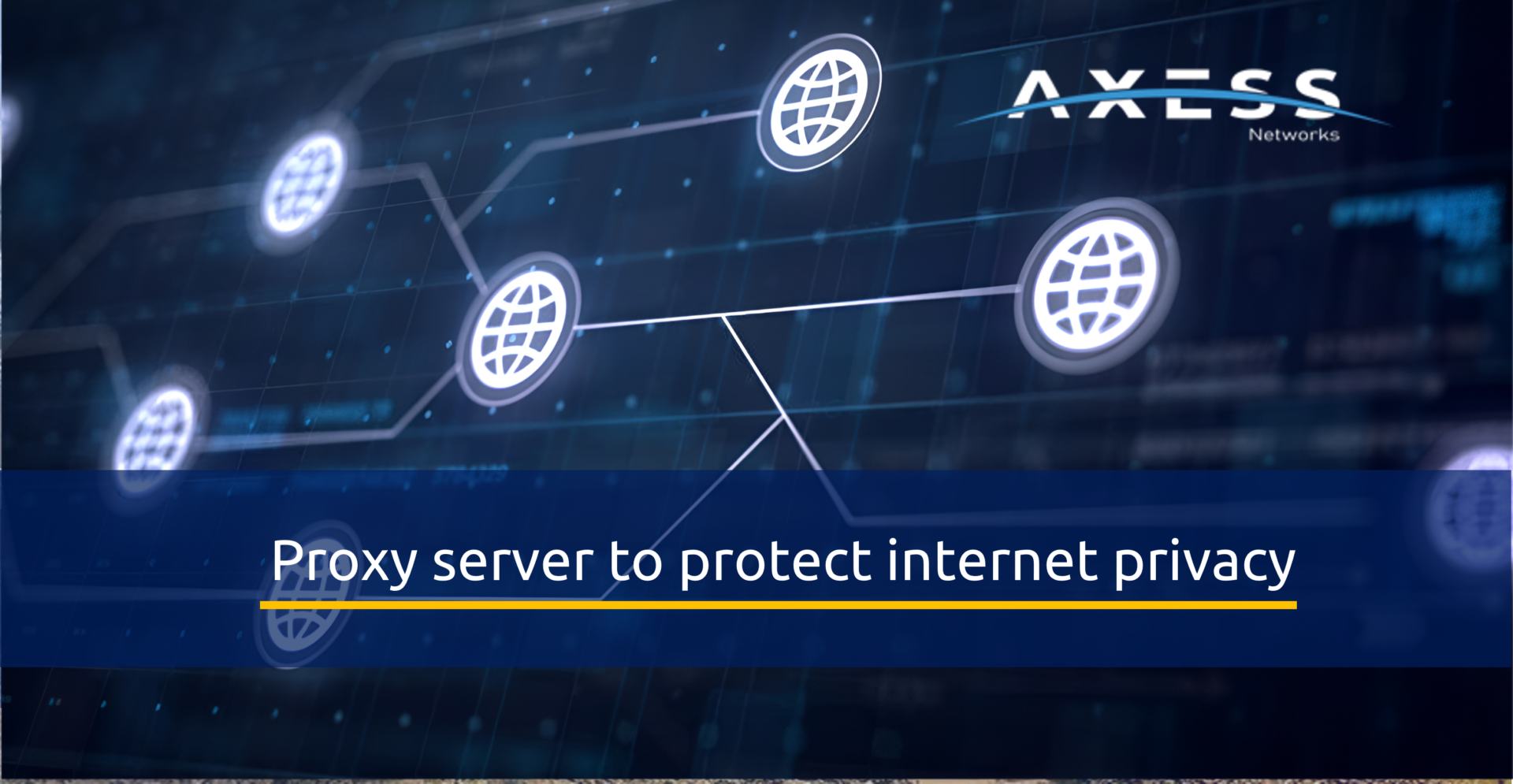
The electromagnetic spectrum in communications and its allocation in Latin America
9 February, 2024
Sectors that make use of satellite connectivity
12 February, 2024Navigating the Internet offers a wide range of opportunities and benefits, but it also carries certain risks. Internet privacy refers to protecting your personal data and online activities in such way that they are not accessible or used without your consent.
Internet privacy is a balance between enjoying the benefits of the technology and protecting your personal data. Adopting strong privacy practices and being aware of how you interact online are important steps to keep your personal data safe and your privacy respected.
Given the increasing amount of information that we share and generate online, privacy has become a critical issue. Here are some key aspects of Internet privacy:
Personal Data: Online privacy involves controlling what personal data you share online, such as your name, address, phone number, email address, and other details that could identify you.
Anonymous Navigation: Being able to navigate the Internet without revealing your real identity or IP address is essential to maintaining your privacy. Using browsers with privacy features or virtual private networks (VPNs) can help you achieve this.
Data Security: Protecting your data from leaks and unauthorized access is crucial. This includes using strong passwords, enabling two-steps authentication, and keeping your software up to date.
Data Control: You should have the ability to control what information you share and who you share it with on online platforms, social networks and websites.
Tracking and Profiling: Companies and advertisers often track your online activities to gather information about your interests and habits. Online privacy means limiting this tracking and avoiding unwanted profiling.
Informed Consent: Organizations must obtain your consent before collecting, storing or using your personal data. Online privacy involves understanding and giving your informed consent.
Right to be Forgotten: Some jurisdictions grant the “right to be forgotten,” which means that you can request that your personal information that is online be deleted.
Encryption: Using encrypted (HTTPS) connections when browsing websites guarantees that your information is encrypted and secure during transmission.
Privacy Education: Understanding the concepts of online privacy and how to protect yourself is essential. Learn about using tools like private browsers, privacy extensions, and social media privacy settings.
Risk Awareness: Understanding the risks associated with disclosing personal information online and poor privacy practices can help you make more informed decisions.
What is a proxy?
What is a proxy? A proxy, within the context of computer networks and the Internet, is an intermediary which acts as a server or access point between a user and another server or online resource. The main purpose of a proxy is to facilitate and control communications between different systems, provide security and improve performance.
Here are some key points to understand what a proxy is and how it works:
Intermediary: A proxy sits between a user and the server or resource the user is trying to access. Instead of connecting directly, the user communicates with the proxy, which then communicates with the destination server on their behalf.
Hide IP Address: A proxy can hide the user’s actual IP address. Instead of the destination server seeing the user’s IP address, it sees the proxy’s IP address. This can improve the user’s privacy and anonymity online.
Access to Restricted Content: By using a proxy located in a specific geographic region, users can access online content that may be blocked or restricted in their current location due to geographic blocks.
Cache and Performance Improvement: Some proxies store in cache commonly requested web content. This allows you to speed up loading webpages for users by providing the content from the proxy cache instead of downloading it each time from the origin server.
Access Control and Content Filtering: Proxies can be used by organizations to control and filter network traffic. They can block access to certain websites, filter malicious content, and improve online security.
Workload Balance: Reverse proxies are used to distribute the load of incoming traffic across multiple servers, improving service availability and speed.
Packet Inspection: Some proxies can inspect the contents of data packets to detect potential security threats and filter malicious traffic.
SSL/TLS Acceleration: Some proxies can speed up secure connections (SSL/TLS) by handling data encryption and decryption, freeing up resources on the destination server.
Transparent Proxies vs. Anonymous: Transparent proxies reveal the user’s actual IP address to the destination server, while anonymous proxies hide the user’s actual IP address.
In short, a proxy is a tool that facilitates and regulates communication between users and online servers. It is used for a variety of purposes, including performance improvement, online privacy, and network security.
Types of proxy servers:
Types of proxy servers: There are several types of proxies, each one with its own specific functions and applications. Here is a description of some of the most common types of proxies:
Web Proxy: Also known as HTTP proxy, it is the most common type of proxy. It is mainly used to access websites. Web proxies can be used to hide the user’s IP address and to access geographically restricted content.
SSL/TLS Proxy: These proxies are used to manage the encryption and decryption of secure (SSL/TLS) connections between the client and the server. They can improve security and performance by relieving the encryption workload on the server.
Transparent Proxy: A transparent proxy hides the user’s IP address from the destination server, but does not provide true anonymity, since the user’s actual IP address is still revealed through the X-Forwarded-For header.
Anonymous Proxy: Anonymous proxies hide the user’s actual IP address from the destination server, which provides a certain degree of anonymity when navigating online.
Forwarding Proxy: Acts as an intermediary between the client and the destination server. When the client sends a request, the proxy forwards it to the server and then forwards the response to the client.
Reverse Proxy: A reverse proxy sits between clients and servers. It is mainly used to balance the incoming traffic workload across multiple servers and to protect internal servers.
Proxy Capturing: Used to intercept and examine the traffic between a client and a server. It can be used to inspect the content of data packets and filter malicious traffic.
Cache Proxy: These proxies store local copies of commonly requested web content, speeding up loading webpages and reducing the workload on origin servers.
FTP Proxy: Used specifically for file transfers over the FTP (File Transfer Protocol) protocol.
SOCKS Proxy: It is a type of proxy that works at the socket level and can be used for various types of traffic, including TCP and UDP. The SOCKS proxies are commonly used by applications that require connections through an intermediary.
Content Filter Proxy: Used to filter unwanted or malicious content, such as adult websites or malware.
Ad Blocking Proxy: Some proxies are used to block ads and unwanted content when navigating through the Internet. These are just a few examples of the types of proxies available. Each type of proxy has its own specific features and applications, and the choice of proxy type depends on the specific goals and requirements of the network and its users.
Is a proxy server the same as a VPN?
Is a proxy server the same as a VPN? Both proxies and VPNs connect the user to the Internet through an intermediate server, but that’s where the similarities end. While a proxy simply directs traffic to its destination, a VPN encrypts all traffic between the device and the VPN server.
A VPN fulfills all the functions that a proxy offers, but it also has other features that make it more reliable and secure. If you want a long-term solution to protect your data and security, a VPN is definitely the best option.
Now it’s time to decide which server is best for you: proxy or VPN. Below, we present the advantages and disadvantages of each of them.
Reasons to choose a VPN
Faster speed: although speed can vary depending on the network’s function, VPNs are usually faster than proxy servers.
Web traffic encryption: VPNs are the best option if you want all of your Internet traffic to be encrypted, not just your IP address.
Full coverage: VPNs are capable of covering multiple web applications and websites, not just one.
No traffic logging: VPNs do not log or sell your Internet traffic to third parties.
Reasons to choose a proxy server
No need to pay: you don’t need to pay a subscription fee for a proxy server.
Coverage for a single website: If you need to hide the IP address on a single application or website, it is better to use a proxy server than a VPN.
If you’re looking for a security solution for a one-time use and don’t care as much about who sees your Internet activity, a proxy server is probably your best option. Nonetheless, if you’re looking for a foolproof protection service that will keep all your traffic hidden, a VPN is your best option.
The satellite link of the AXESS MNGM solution improves the security of your network:
The satellite link of the AXESS MNGM solution improves the security of your network: For AXESS, providing a secure connectivity is fundamental. Therefore, we offer a service that allows you to store and manage data securely, in order to facilitate and support decision-making processes. AXESS MNGM is a high impact product, which offers:
A satellite link, Intelligent network management to control data., The possibility of networks switching. Transmission of the exact configuration that the client wants.
Likewise, AXESS MNGM allows for:
Intelligent networks management (SD-WAN)
Manage WAN networks through algorithms that give intelligence to the company’s network.
Balance the main channels and/or backups by application type, intelligent bandwidth distribution and by content category.
Switch services from one WAN to another, through packet loss algorithms, capacity consumption or scheduled disconnections.
Intelligently separate data and internet traffic into two different channels.
Manage content (iContent)
Through intelligent and constantly updated categories.
Display content according to network user types, schedules and priority.
Optimize performance (QoS Layer 7)
Prioritize and control intelligently managed content by category, through bandwidth policies, number of pages opened per day, navigation hours, etc.
Achieve the desired flexibility, applying quality of service with high-level benefits.
Improve security
Protect the company’s network with next-generation firewall (NGFW) algorithms.
Process and keep statistics within the company processes.
In summary, companies require intelligent distribution of traffic on the networks they use, along with protection and security of the information, in order to avoid possible hacker attacks, increase network efficiency and reduce costs.






